The content of the article
“Restless kid! Not a minute sits in place! Again the designer poured out, threw the dolls off the shelf, hit another child and ran away with his typewriter to the opposite corner of the group! ” - Such complaints are usually heard by parents from educators, picking up a restless preschooler from kindergarten. Psychologists and neuropathologists unanimously call such a baby hyperactive. A similar picture is observed daily in children around the world. It has long ceased to be a rarity in our country. According to statistics provided by preschool teachers of one of the kindergartens near Moscow for 2016, hyperactivity was put to every third child from 3 to 7 years old. 2017 did not significantly change these indicators, and even in some age groups increased them. Where does this phenomenon come from, is it so bad and how to correct it - all this will be covered in this article.
Causes of Motor Dysfunction Syndrome (ADHD)
The mechanism of hyperactivity development at this stage is not fully understood. However, specialists involved in this issue are inclined to three factors in the development of this problem:
- The hereditary factor - as a rule, if you examine the pedigrees of children suffering from this syndrome, it can be revealed that the next of kin (often along the same-sex lines with a child) also had deviations in the behavior of this nature. Often, the features of a once hyperactive child can also be seen in the behavior of the parents themselves - adults behave too fussy, bite their nails, tap on the table with their fingers or the first thing that comes to hand, are often hysterical and unrestrained.
- Mutational factor - due to the acquired change in one or in the group of genes responsible for the formation of the psyche of the child. These transformations are possible both at the stage of reproductive cell formation, and during intrauterine development.
- Behavioral factor - simply put, this is “pseudo-hyperactivity”. If you look at the psyche of such a child, then, most likely, nothing characteristic of ADHD will be found. Such children, as a rule, sympathize with fidgets and try to imitate them in every possible way. This phenomenon is most often observed in preschool and adolescence, when the desire to be like everything encourages a weak and indecisive child to copy the behavior of the “chieftain of the collective” so as not to be ridiculed among classmates.
Medical hyperactivity
Hyperactivity or ADHD (a child’s motor disinhibition syndrome) is an inability to concentrate on a particular case, a frequent shift of attention, coupled with motor activity. Simply put, this is a dysfunction of the processes of inhibition and excitation in favor of the latter.
It is known that the regulation of these processes in the human body is a whole complex of internal organs and systems - this is the nervous, humoral (hormonal), musculoskeletal, respiratory, cardiovascular and a number of many organs included in a single organism.
From the point of view of the humoral nervous system, 2 leading hormones, norepinephrine and dopamine, are responsible for the regulation of these processes. A shift to a specific side of each indicator leads to an external imbalance in the psyche of the child. These processes are regulated by the cortex of the cerebral hemispheres of the brain; all conscious impulses are laid in it.The processes of excitation and inhibition are antagonists to each other: the change of their cycles is a protective reaction of the body from overloads and stagnation. In a child, these processes are just beginning to form; many still have to adapt to the rhythm dictated by life.
And yet, why are some children not childishly calm, while others resemble tumbleweeds? The explanation here is quite simple - the fact is that the dysfunction also has a different character: in some children excitation prevails, and in others, on the contrary, inhibition.
Hyperactive baby - what is he?
Hyperactive children are a real pedagogical problem for educators, and at school age - for teachers and other educators. Restless, they do not sit still, often break away from it during classes, interfere with others, at an older age - they are rude to teachers in response to the requirement for discipline. Often these children are in the bulk and are companies of difficult teenagers. How to recognize the elements of hyperactivity in your own child and in time to address this problem?
Psychologists distinguish 2 forms of ADHD - autistic and classic.
Autistic ADHD
"It seems like hyperactivity and doesn't seem like it." This is a latent form of hyperactivity in which the child has autistic elements of behavior. This form is more often observed in girls of primary school age. With her, first of all, a strong distraction of attention stands out - the child seems to be not present at the lesson. He seeks to know everything around him: paintings on the classroom wall, the number of ravens on a branch (it was thanks to such schoolchildren that the proverb “count the raven” went). Along with such spilled attention, there is a parallel strong motor activity - he can tear pieces of paper into pieces, disassemble a pen, and kick legs under the table. If it touches adjacent chairs and interferes with other children, it is not aware of this, as it often does not arbitrarily.
What is the problem of such children?
- Due to the lack of attention, the child often finds himself in unpleasant situations, starting from the rod that suddenly leaked out of the paste at the lesson and ending with the risk of losing his own while distracted by foreign objects.
- It does not absorb information in the lesson, as it simply does not listen to the teacher. This becomes a significant obstacle to the quality of knowledge.
- Inattention can adversely affect the child’s independent travels - he simply misses his stop in transport and runs the risk of stopping in the wrong direction.
- The first stage in the formation of personal irresponsibility.
The classic form of ADHD
This category is the very concept of “hyperactivity”, as it is customary to perceive. This is the main form of motor disinhibition that occurs in children of any gender and age. It used to be believed that ADHD is not a disease, but a pedagogical neglect of a child, inattention on the part of parents, and indifference from the hopelessness of teachers. In fact, such children were either given a “cross” or perceived with a slight irony.
Recent studies have nevertheless proved that motor disinhibition syndrome is a mental illness that needs to be corrected in time. But before making adjustments, it is important to correctly identify the main features, according to which we can talk about the presence or absence of this drawback in this particular case:
- Restlessness - a child with motor disinhibition does not sit in a specific place. He needs to constantly move in space and, if he is forced to sit for a long time definitely localized, he begins to move, swing from side to side, move his arms and legs, interfere with other children, often contributing to their activities and thus initiating potential conflict.
- Forgetfulness - a child with a similar deviation on the go forgets the activity that he was engaged in recently, he can go to the closet for a comb, meet the other child in the locker room, see his toy and forget where he was going and why.
- Broken attention - not the ability to concentrate on a certain type of activity and quick switchability to other elements, often not bearing a given load. He can glue the body of the car, then remember that there are trees around it (which are not in the task!), Get a pencil and start drawing trees. At the same time, he may not remember about the body at all.
- Fussiness is the inability to systematically perform a certain motor action. A child on the way to the locker room can begin to go around the tables and chairs in the group, which are located at a completely different end from the door. At the request of the educator to transfer several items and put them on certain shelves - he will run back and forth several times empty-handed, forgetting to take what is needed, may not take what he was told and put in the wrong place. There were times when such children, after a walk, put toys in the baskets of another group or things not in their lockers, but often left them completely thrown.
How to help such a child?
This baby needs a comprehensive measure of support from 3 or more types of specialists:
Psychologist - work is underway to concentrate on these children. These are various role-playing games, theatrical productions, conversations with the child on certain topics. In working with such children, an individual form of training is recommended, where distracting moments are excluded. It is important to understand what the baby’s great interest is expressed in, and to work on working out the shortcomings precisely on the basis of this direction: if the child is interested in the railway, it is important to build his classes in this plane.
Educators - the task is not to throw such a baby even deeper, but, on the contrary, to direct him into a useful direction, to interest, emphasize his advantages and at least pay attention to the shortcomings:
- To make such a pupil “the first assistant”, and to constantly keep the process of the work performed by him under visible control and, if the child began to be distracted, to return him to the activities that are required of him in time.
- To celebrate the merits of the baby in front of the parents, emphasize how well he did the work and slightly touch on the side of the shortcomings.
- Correct the behavior of parents if they are excessively strict with the child.
- If he was guilty - scolding severely, but without insults, for bad behavior, explaining to him what he had done wrong, and demanding him to repeat all that was said.
Doctors - as a rule, their visit is recommended if the first two categories do not cope with the tasks. Parents are advised to consult a neuropsychologist, neurologist, or child psychiatrist. The specialist evaluates the complex functioning of the nervous system, talks with the child to assess the maturity of speech functions and intelligence, and then selects the medications necessary to correct the defect.
As a rule, it is prescribed:
- Nootropic group of drugs for brain nutrition;
- medicines that support vascular tone;
- B vitamins, for the harmonious formation of nerve impulses;
- if necessary, a number of specialized drugs aimed at stabilizing processes.
From folk remedies, various sedative fees are used, aimed at suppressing the predominance of exciting processes:
- Valerian tablets (alcohol-containing tincture is not recommended).
- Teas with linden, mint, lemon balm.
- Decoctions of angelica, St. John's wort.
- With caution, tincture of motherwort is given.
- Rosehip infusions to enhance immune functions.
- Before going to bed, coniferous or lavender baths are recommended.
Parents - despite the fact that they are often not specialists, their role remains the most important in the life of the child. Their task becomes - the formation of the correct regimen, both general and nutrition:
- Draw up and think over the correct regimen of the day, clearly monitor its compliance.
- Exclude irritating and incomprehensible products from the diet.
- Ensure a calm, timely retirement to bed: prevent all kinds of active games, dim the lights, lower the sound volume of the TV (music) or turn it off altogether.
- Control over information received from the outside (Internet, friends, school, TV).
- Eliminate stressful situations in the family, especially related to divorce, try to be more delicate with each other in the presence of children.
- Watching relatives - is there a factor of negative attitudes against one of the parents, connivance in education, a bad example.
- Participate in resolving conflicts with teachers, try to be a child in them a lawyer, and not a prosecutor.
- Talk more often with your son or daughter about his inner state: what worries, solve personal problems, do not take communication into the narrow plane of “school - lessons”.
Mistakes made in the educational approach to a child with ADHD
Despite the fact that ADHD is recognized as a pathology all over the world and packages of measures have been developed to help overcome it, to this day adults make a number of serious mistakes in the treatment of such children:
- Constantly faulting and pulling them, while humiliating the personality of the child, Excessively criticize every action, while not considering it necessary to praise.
- Allow permissiveness in behavior.
- Children have uncontrolled viewing of television and the Internet.
- Stressful situations in the family, provoking unnecessary experiences.
- Incorrect behavior with the child of one of the relatives (connivance in the development of bad habits, rude expressions, attitude against other family members, an example of an antisocial lifestyle, etc.).
- There is no control over the regimen of the day (they allow the child to control himself).
A reasonable approach to solving the problem is the key to its successful solution in all difficult life situations. The identity of each individual child is the future of the family and the nation as a whole.
Video: 10 rules for raising a hyperactive child

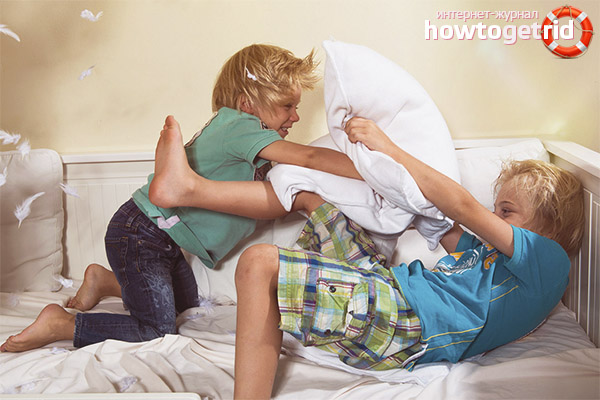
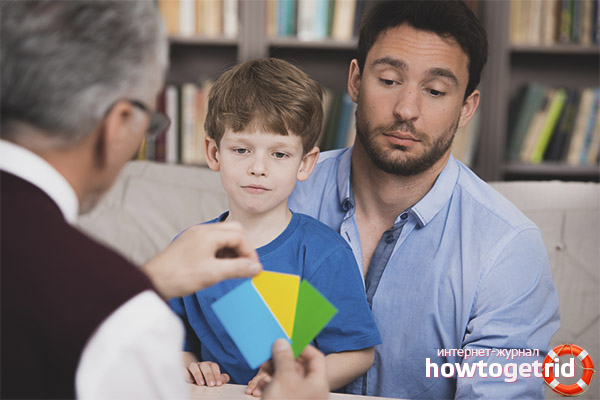




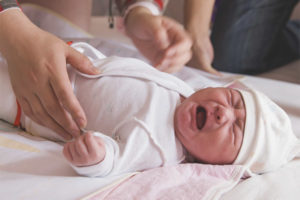
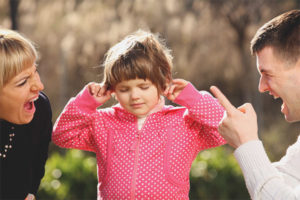
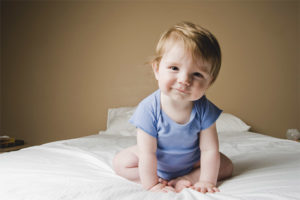
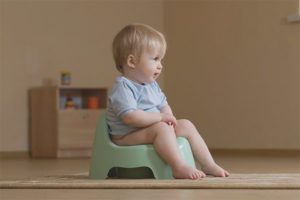
Submit